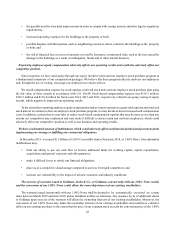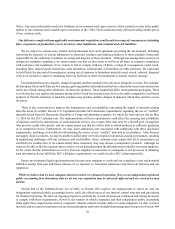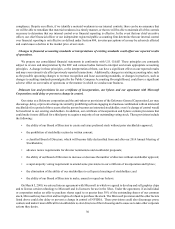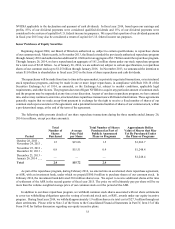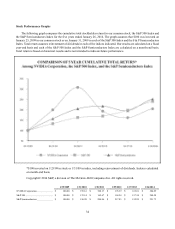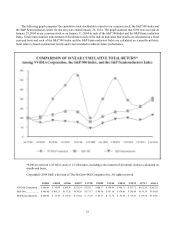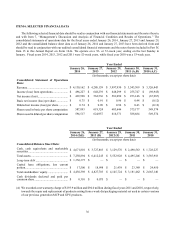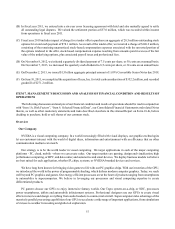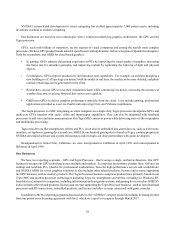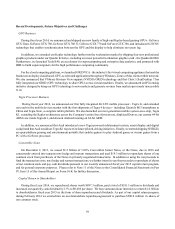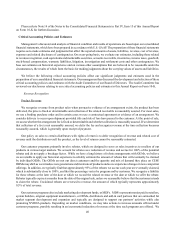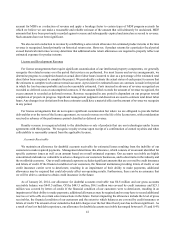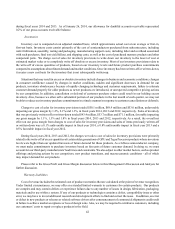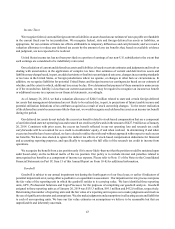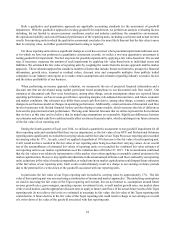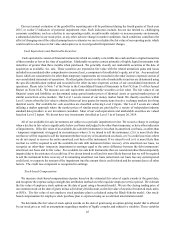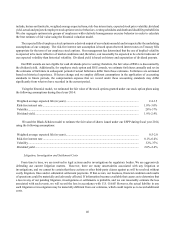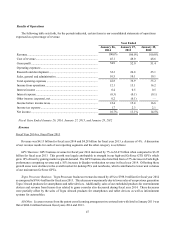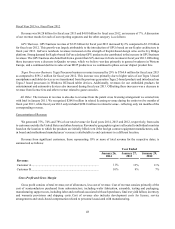NVIDIA 2013 Annual Report Download - page 182
Download and view the complete annual report
Please find page 182 of the 2013 NVIDIA annual report below. You can navigate through the pages in the report by either clicking on the pages listed below, or by using the keyword search tool below to find specific information within the annual report.38
NVIDIA's research and development in visual computing has yielded approximately 7,000 patent assets, including
inventions essential to modern computing.
Our businesses are based on two technologies with a consistent underlying graphics architecture: the GPU and the
Tegra processor.
GPUs, each with billions of transistors, are the engines of visual computing and among the world's most complex
processors. We have GPU product brands aimed at specific users and applications: GeForce for gamers; Quadro for designers;
Tesla for researchers; and GRID for cloud-based graphics.
• In gaming, GPUs enhance the gaming experience on PCs by improving the visual quality of graphics, increasing
the frame rate for smoother gameplay and improving realism by replicating the behavior of light and physical
objects.
• For designers, GPUs improve productivity and introduce new capabilities. For example, an architect designing a
new building in a CAD package can interact with the model in real time, the model can be more detailed, and photo
realistic renderings can be generated for the client.
• Researchers can use GPUs to run their simulations faster while consuming less power, increasing the accuracy of
weather forecasts, or pricing financial derivatives more quickly.
• GRID uses GPUs to deliver graphics performance remotely, from the cloud. Uses include gaming, professional
applications provided as a service (SaaS) and improving Citrix and VMware installations.
The Tegra processor is a SOC integrating an entire computer on a single chip. Tegra processors incorporate GPUs and
multi-core CPUs together with audio, video and input/output capabilities. They can also be integrated with baseband
processors to add voice and data communication. Our Tegra SOC conserves power while delivering state-of-the-art graphics
and multimedia processing.
Tegra runs devices like smartphones, tablets and PCs; it can also be embedded into smart devices, such as televisions,
monitors, set-top boxes, gaming devices and cars. SHIELD, our Android gaming device based on Tegra, contains proprietary
NVIDIA-developed software and system technologies and leverages our deep partnerships with game developers.
Headquartered in Santa Clara, California, we were incorporated in California in April 1993 and reincorporated in
Delaware in April 1998.
Our Businesses
We have two reporting segments - GPU and Tegra Processor - that leverage a single, unified architecture. Our GPU
business leverages our GPU technology across multiple end markets. It comprises four primary product lines: GeForce for
desktop and notebook PCs; Quadro for professional workstations; Tesla for high-performance servers and workstations;
and NVIDIA GRID for server graphics solutions. It also includes other related products, licenses and revenue supporting
the GPU business, such as memory products. Our Tegra Processor business comprises product lines primarily based on our
Tegra SOC and modem processor technologies including Tegra for smartphones and tablets, including for Windows RT-
based devices; automotive computers, including infotainment and navigation systems; and gaming devices such as SHIELD.
It also includes other related products, licenses and revenue supporting the Tegra Processor business - such as Icera baseband
processors and RF transceivers, embedded products, and license and other revenue associated with game consoles.
In addition to the two reporting segments discussed above, the “All Other” category primarily includes licensing revenue
from our patent cross licensing agreement with Intel, which we expect to recognize through March 2017.


